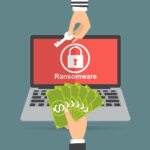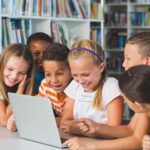Personalized learning offers myriad possibilities for teachers and students. And in the wake of the pandemic, as educators try to manage learning gaps, individualized learning is more critical than ever.
New edtech developments have helped these learning techniques become more efficient, scalable, and achievable for educators over the last decade. While many strategies were forced to take a back seat to more pressing challenges during the pandemic, and now it’s time to turn our attention to a more individual form of learning once again.
Join eSchool News and a panel of experts to explore what personalized learning looks like now and what’s to come. You’ll hear these experts share best practices, and you’ll learn why assessment and accountability are more important than ever in today’s K-12 landscape.
- 5 ISTELive 23 sessions you won’t want to miss - June 9, 2023
- IBM grants $5 million for cybersecurity, enhanced skilling on AI - June 9, 2023
- As ESSER spending increases, digital learning is a priority - June 1, 2023
More from eSchool News
Are substitutes the answer to the teacher shortage?
California is investing $350 million in teacher residencies, recognizing the need for effective teachers, which too many of our classrooms are missing. But this big bet isn’t working. Why? Too many people can’t afford to take on the financial liability to train for the position.
Preparing for ransomware attacks begins with education
The biggest threat to K-12 schools’ cybersecurity is, ironically, education. It’s an expensive deficit. But there are funds and tools to help.
How to use UDL-inspired technology to reengage students
While schools have largely returned to normal classroom instruction, some ripple effects of the pandemic remain. Educators are searching for a spark to re-engage students in the learning process.
How my 5th graders are taking a stand against bullying
Unseen and often silent, the shadows of bullying loom within the walls of schools, casting a dark cloud over the lives of countless students. The PACER’s National Bullying Prevention Center engages and empowers kids to combat bullying in all its forms.
Time to build an AI library
There’s no avoiding it. Artificial intelligence is here: in your classrooms, in your front office, on your phone. And while the topic can be overwhelming, it doesn’t have to be a burden. One of the best pieces of advice regarding managing AI in schools so far came during a conversation yesterday with Melissa Hortman, a senior industry executive at Microsoft, for our sister publication eCampus news, but her advice applies to all levels of education: First, learn how it works.
5 ISTELive 23 sessions you won’t want to miss
ISTELive 23 lands in Philadelphia on June 25, and the annual conference promises to be packed with content for administrators, curriculum directors, classroom teachers, and everyone in between.
IBM grants $5 million for cybersecurity, enhanced skilling on AI
In response to the growing threat of ransomware attacks against schools around the world, IBM will provide in-kind grants valued at $5 million to help address cybersecurity resiliency in schools.
5 tips to keep online students motivated
A student’s motivation in school is a key driver of their academic success. Yet, the demanding nature of high school classes mixed with a teenager’s natural craving for independence and individual identity can stand in the way of that motivation.
Collaborative edtech tools are changing the game for student engagement
What’s been lacking in education up to now? From secondary schools to master’s degrees, educators often adopt a unidirectional approach, where information flows solely from teacher to student. However, it is imperative for students to actively become part of the teaching process, and teachers must cultivate an environment conducive to peer-to-peer learning.
How our school handled the chaos of an active shooter hoax
I was in a meeting when I heard the sirens. I immediately excused myself and saw the first squad car screech to a halt in front of our doors and knew it was bad. The police department had just received a call saying there was an active shooter somewhere at Spanish Fork High School and two students were deceased.











